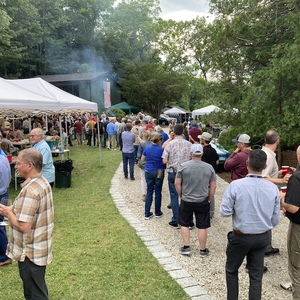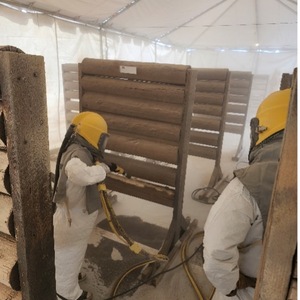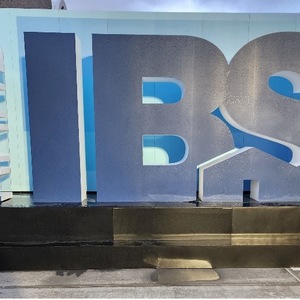
I recently made the 1349-mile trip from my home in Northern Minnesota to Austin, Texas. Stepping off the plane in Austin at 9:30 p.m. on November 8, my first impression was that it was hot and muggy—a far cry from the 35°F I left behind. I was taking my first trip to Texas to attend the Fine Homebuilding–sponsored Building Science Symposium—a new two-day event focused on building science education.
This training offering is an offshoot of the Midwest Building Science Symposium started by the Kansas City Chapter of BS* + Beer. Travis Brungardt and Joe Cook, partners at Catalyst Construction, started the symposium in 2020, which I had the pleasure of attending. That first event had just two guest speakers, architect Steve Baczek and Jake Bruton, owner of Arrow Building in Columbia, Missouri. In 2021, the event grew to include more speakers. And this year, the symposium was held not only in Austin, Texas, but also Kansas City, Missouri; Chattanooga, Tennessee; and there’s an upcoming event in Washington, D.C.
Lineup of 2022 speakers
Most of the speakers at the Austin event will be familiar to regular GBA readers. Steve Baczek kicked things off talking about the four control layers. His decades of experience, which includes time working at Building Science Corporation, gives him a deeply informed and layered perspective. I’ve seen him speak more than a dozen times, and I always learn something new. During his Austin session, Steve shared examples of several control layer combinations, showing photos of past projects and construction details and discussing the where, what, and why of his decisions. Something he stressed was the importance of working as a team; the best chance of a successful project, he says, is when the owner, designer, and builder are all on the same page.
The second speaker was one of GBA’s contributing authors, Ben Bogie. I first met Ben in 2019 at the Fine Homebuilding Summit in Southbridge, Massachusetts, where he gave a talk on water management strategies that included some of his experiences managing that most important control layer. In Austin, he covered similar topics but what I found most interesting was his discussion of how water reacts at the molecular level. He explained the energy required to change phases; how water acts in vapor, liquid, and solid states; and how moisture moves through building materials. Ben is an expert when it comes to teaching both the science of water and the importance of water in building science.
Jake Bruton’s presentation was on air-sealing. Something new for me was how he approaches flashing and installing windows without nail flanges. I have yet to see a flangeless window installed on a residential build in my market. How to install and detail “innie” windows to create continuity in both the water and air control layers needs proper planning and execution, and Jake demonstrated how to accomplish this.
(Jake and Steve have been exceptionally active lately—both are contributors to The Build Show Network; they record the Unbuild It Podcast (along with GBA founding member Peter Yost); and they give regular live presentations and are vocal on social media platforms—Instagram, in particular, is a great place to learn some of the many lessons they freely share.)
Dr. Allison Bailes was next to present. As many readers know, Allison is a longtime contributor to GBA and has his own blog, Energy Vanguard. He had a few copies of his new book, A House Needs to Breathe . . .Or Does It? available. Allison’s talk was all about indoor air quality. What I found most interesting is how HVAC design is one of the keys to good IAQ. His discussion on how air quality impacts human health, especially the very small particulates and how they move from our lungs and into the bloodstream, was both fascinating and terrifying. (The discussion made me want to change the filtration strategy for my own home.)
Perhaps the most energetic speaker was building code expert Glenn Matthewson, who owns a consulting and education business called Building Code College. He is active in code development and is passionate about getting others involved too. His talk covered codes dealing with energy and building science, as well as the planning of the 2024 energy code and a new labeling of the “variable” or “smart” class of vapor retarders. It appears the new description will be responsive vapor retarder or responsive vapor control layer. I plan to take a few of Glen’s online classes to inform this Training for the Trades series.
Next up was Enrico Bonilauri, an architect from Northern Italy who moved to Colorado a few years ago to provide Passive House training through Emu, the company he and partner, Mariana Pickering, started. Enrico gave an introductory course in Passive House design. Part of his presentation expanded on Jake’s discussion on innie windows and how the window location in the opening can affect the performance of the overall wall. His discussion was backed by several thermal models showing heat flow through different window assemblies. I also hope to take some Emu trainings to help inform this series.
The final speaker was a person who was highly influential during my foray into building science: Peter Yost. He has semi-retired but still records podcasts, provides building science consulting, and gives the occasional lecture. Peter is another Building Science Corp alum with a wide range of technical knowledge. His presentation was called “Building Science Myths, Magic, and Mysteries.” I’ve heard Peter discuss the importance of “managing moisture and energy with equal intensity” on several occasions, but this presentation expanded on that concept. He explained how to calculate the drying potential of different assemblies, and how to measure moisture content in the assembly, while emphasizing the importance of understanding the characteristics of individual building materials and how these materials can change an assembly.
A few details and special offerings
The symposium was held at The Brewtorium; and there were about 100 attendees. The cost to attend was $100, if you registered early, $150 otherwise. The reason the event was so inexpensive was because of the support from the vendors who were also in attendance. They included: Huber with their Zip Systems and Advantech product lines, Dupont and their Tyvek family of products, Atlas insulation products, Sashco, Rockwool, Hikmicro, Zehnder, and Innovated Structures Inc. (Tstud). Emu and Mitsubishi also helped sponsor the event, and Fine HomeBuilding (parent company of GBA) was the media sponsor.
The event provided continuing education credits through the American Institute of Architects (AIA); sticking around for both days provided 9.5 credits. There was a large number in attendance from the design community who I’m sure benefited from that offering.
I had the opportunity to chat with a few of the attendees, some of who were new to the building science community. One described the event as “drinking from a fire hose.” It’s true, there was a lot of information disseminated in a short amount of time; even for the more experienced building science nerds, there were new things to learn.
What I like most about events like this is the opportunity to interact with the speakers. When they weren’t presenting, they were in the audience. Frequent breaks allowed for questions and conversations with other attendees, speakers, and sponsors. Unlike other events I’ve attended, these talks were attended by everyone; other educational models have more than one class at a given time, requiring the attendee to choose between them. Also, this style of in-person education is my preference. I don’t think you could get a better quality education than that found at these Building Science Symposiums. The organizers, Travis and Joe, hope to make the event a quarterly offering in additional locations throughout the U.S. Keep up with what’s happening by visiting Kansas City BS* + Beer.
________________________________________________________________________
Randy Williams is a builder and energy rater based in Grand Rapids, Minnesota. Photos courtesy of the author, except where noted.
Weekly Newsletter
Get building science and energy efficiency advice, plus special offers, in your inbox.















0 Comments
Log in or create an account to post a comment.
Sign up Log in